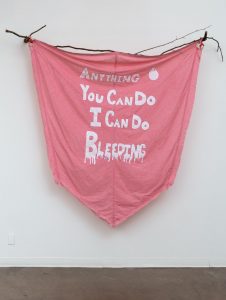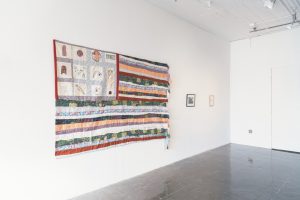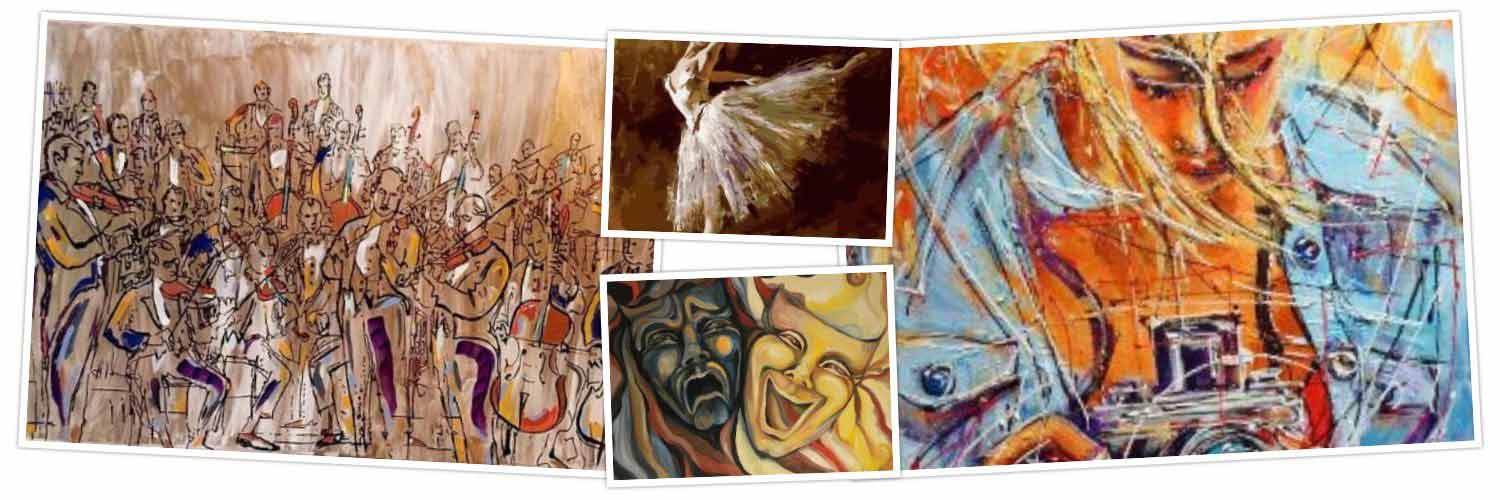Artpace Spotlights Women Artists
By JASMINA WELLINGHOFF, Editor –
Artpace is inaugurating the new year with a remarkable exhibit of women artists chosen from the long list of individuals who participated in the organization’s residency program over the span of 25 years. Curated by Erin Murphy, the Artpace residency and exhibition manager – and spread throughout the building- Visibilities: Intrepid Woman of Artpace features 17 women, many of them “people of color,” and of mixed heritage from San Antonio, the U.S. and several foreign lands, such as Lebanon, S. Korea, Ireland and Kenya.
“I started by looking at the full list of artists who have been through the program, and one thing I wanted to do, is focus on women because we are an organization founded by a woman,” said Murphy who joined Artpace about a year ago. “And then I looked at things that were happening world-wide in 2020 – that’s something that I do when putting exhibitions together in general (to find connections and resonances with the work from the past). This year is an election year and the 100th anniversary of women’s suffrage in the United State. I also consider the period of the exhibition itself. The International Women’s Day is March 8. All of that led me to women artists who are dealing with being a woman.”

Other commonalities she discovered along the way include direct references to politics, references to the female body and identity seen in a number or works, and printed text that’s incorporated into a plurality of the artworks, something the curator appreciates. Some of the works have never been shown before.
Since Artpace is not a collecting institution, Murphy had to reach out to individual artists, their galleries or collectors in order to assemble the pieces she wanted for the show. Almost every medium is represented, from painting and photography, to fabric art, mix-media and video.
Artpace founder, the late Linda Pace, is represented by a large, eye-catching 3-D collage called Green Peace, which shares the walls of a downstairs room with works by two other San Antonio-related artists, Janet Flohr, owner of Hare & Hound Press, and former resident, photographer Kathy Vargas. Pace was known for assembling a large number of small objects into visually interesting monochromatic combinations, often in red.

Kathy Vargas was personally present during the press preview for Visibilities and talked about her work Shopping for Bargains. Referring to her images, she engaged the small media crowd by pointing out the complex issues surrounding cheap goods manufactured in countries that hardly pay anything to their exploited workers. Boycotting such goods, however, negatively impacts the poor people in this country who buy them. “I am just presenting these questions,” she said.

Also on the ground floor, in the Main Space, you’ll find an installation by Virginia-born Margaret Meehan who was an Artpace resident in the summer of 2014. A pile of attractively arranged bricks to which vintage photos of women – all races and ethnicities – are affixed and tied with ribbons to make each brick resemble a gift package, occupy the center of the floor, while a couple of banners, made out of WWII parachutes hang above. One says “Eve was Framed” (We loved it!) and the other reads “Anything You Can do I Can Do Bleeding” Apparently both phrases actually appeared for the first time on actual protest banners during the Suffragette Movement. And the bricks are part of history, too. More than a century ago, some English women formed the Women’s Social and Political Union whose goal was to achieve voting rights for women. When their peaceful tactics produced no results, the women resorted to more violent actions, including throwing bricks and stones and breaking shop windows throughout London. With her installation, Meehan has given us, women of the 21st century, a valuable history lesson. The real-life context is implied in her title, Through a Window. Over a Wall.
The upstairs Hudson Showroom contains a plurality of works. Histology of the Different Classes of Uterine Tumors by Kenyan artist Wangechi Mutu consists of 12 collaged digital prints which are a bit disturbing to see. Mutu superimposes medical drawings of female cancers and images of body parts with faces, in what appears to be a commentary on the tendency to reduce women – and specifically black women – to their bodies and organs.

On the opposite wall across the room hangs a fabric banner made by Jenelle Esparza who, like Vargas, was present in person to speak about her piece. Named Continent 2017, the large banner is, in part, a tribute to her grandmother who taught her to sew and embroider and whose unfinished quilt blocks are incorporated in the work. Of course, the piece is a reference to traditional “women’s work,” which the artist reframes as art worth of respect.
Another disturbing work is Palestinian artist Mona Hatoum’s There’s so much I want to say, a video of her face with male hands trying to shut her up. Nearby is Martha Wilson’s Makeover: Melania, also a video but an amusing one that shows the transformation of the artist’s aged face into Melania Trump’s beautiful and still youthful one. It’s unclear what Wilson intended to convey, perhaps something about the inevitability of losing one’s looks, which often are a woman’s ticket to success in a male-dominated world.
And there’s a lot more, including Laura Aguilar’s 1996 piece, Nature Self-Portait and Three Eagles Flying, depicting her partially naked and bound by ropes between the Mexican and American flags, her face covered by an eagle image, clearly expressing her extreme discomfort about not fitting in either paradigm.
Other artists in the show are Katrina Moorhead, Koo-jeong-a, Wu Tsang, Regina Jose Galindo, Lorraine O’Grady, Jennifer Ling Datchuk, whose solo exhibit just closed at Ruiz Healy Art; Autumn Knight and Joyce Scott.
In relation to this exhibit, it is interesting to note that until about 50-60 years ago, there were very few women who made a name for themselves as nationally or internationally known artists. In fact, in 1971, art historian Linda Nochlin wrote her famous essay, Why Have There Been No Great Woman Artists, to address that issue. How things have changed!
So we asked Murphy to guess which of the women in the current exhibit is likely to have lasting impact in the art world.
“Hm, that’s a tough question. It’s like asking me to choose my favorite child,” she said laughing. But after a moment, she continued: “This is going to sound like a copout but I feel like the art world is fluid and people come in and out of it. For instance, there are female artists of color who have been ignored for a long time before they were suddenly “discovered” by curators and galleries… So, honestly I can’t choose one or two.
“I hope visitors will find at least one artwork in the show that resonated with them. Of course, I hope that the whole exhibition resonates with them. I hope everyone visiting the Visibilities exhibition feels represented in the show in one way or another, that they find something that speaks to them personally.”
